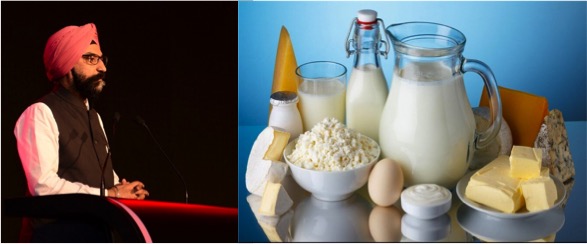Recently, the Federation of Indian Chambers of Commerce and Industry (FICCI) hosted the 13th edition of the Foodworld India Global Convention for Food Business and Industry. On day two, during the session ‘Untapped Export Potential: Key for Sustained Growth of India’s Processed Food Industry’, RS Sodhi, the managing director, GCMMF (Amul) mentioned that India is one of the largest food producers globally.
He alluded to the growth figure of USD 600 billion of Indian food consumption over the next decade. Sodhi said that out of this pie chart, dairy alone contributes USD 110 billion, adding that he expects the dairy industry to notch up USD 200 billion in the next 10 years. Sodhi said, “Today we are 21% of the world’s milk production and in 2030 we will be producing one-third of the world’s milk and that too, by 100 million farmers.
There is tremendous potential in dairy because most of the regions around India are milk-deficient. Also, dairy provides sustainable rural employment.” While the export of branded milk products is growing, Sodhi said that currently, the Indian dairy industry is not competitive in exports of milk as a commodity. He pointed out, “Most of the dairy surplus countries in Europe and USA, except New Zealand and Australia, highly subsidise milk exports.
So we need to identify niche dairy products and work on it.” The Government of India’s Production Linked Incentive (PLI) scheme is currently in the news. Sodhi said, “Mozzarella cheese has been included in the PLI scheme, but this is buffalo cheese”, pointing out that approximately 58% of India’s milk production is buffalo milk. “But we have to work from zero, as right now in the world market, the contribution of Indian mozzarella cheese is non-existent.”
For the milk supply chain, the separation of cow and buffalo milk is a prerequisite. Presently, most of the milk is mixed. Sodhi said, “We cannot compete in cow milk, but buffalo milk is our USP. So, we need to have separate collection and processing lines for cow and buffalo milk.” Sodhi concluded his presentation by saying, “Most of our neighbouring countries are milk-deficient. We need to see how we can reach these countries.
This is where the role of policymakers is important.” He flagged his concern by explaining that the world’s top 10 dairy-importing countries “don’t allow imports from India.” He felt India should up its ante in terms of negotiations about free trade, tariff and non-tariff barriers with these counties. He shared with the delegates how “countries like Indonesia are able to negotiate lower duties when they export their oil to India, but we are not asking them to reduce the duty on our processed food exports.”
Source : Campaignindia April 8 2021 , This article first appeared in WhatPackaging? magazine.

